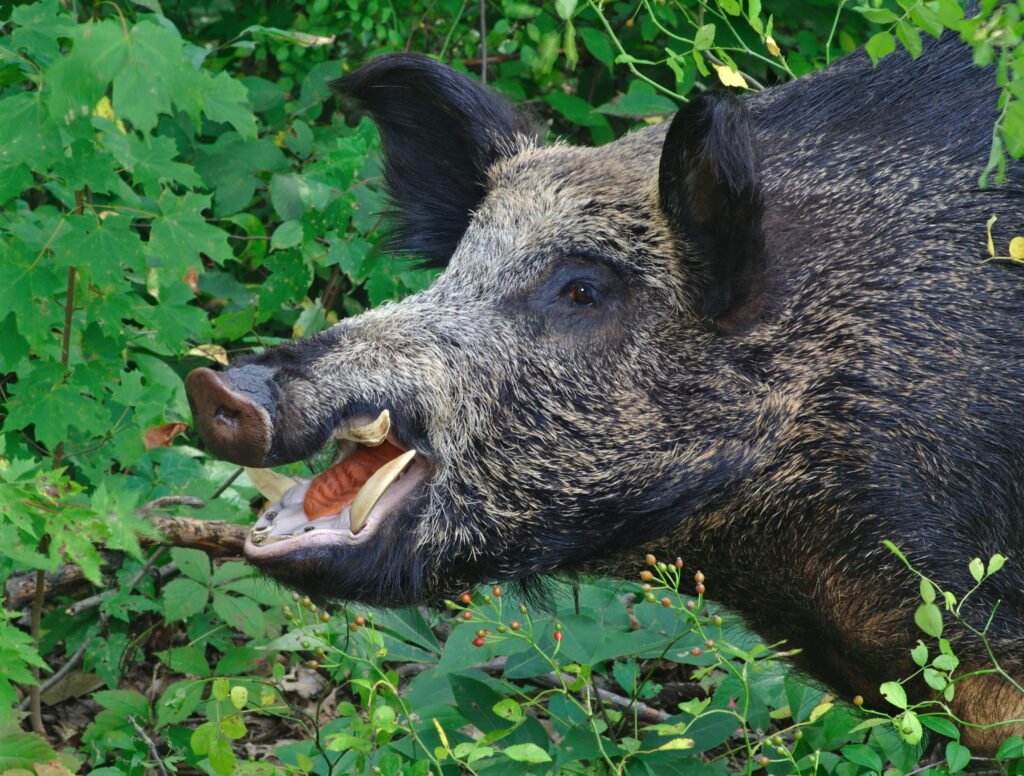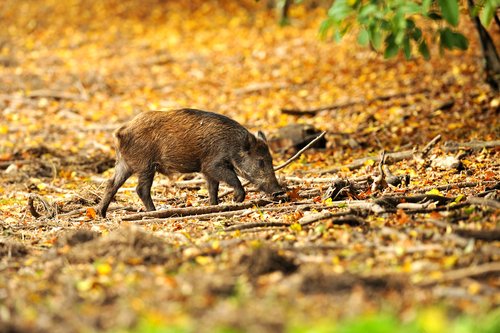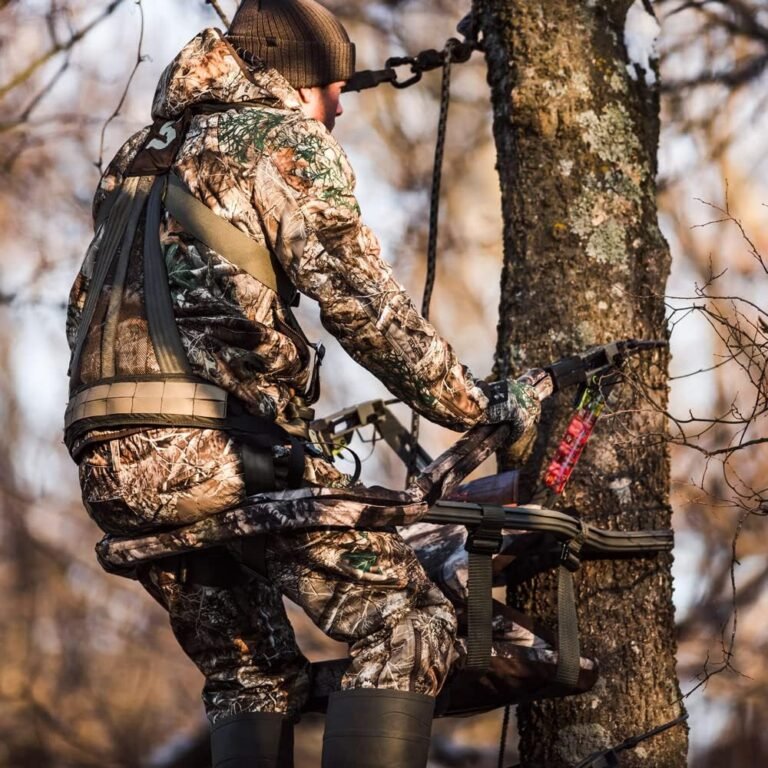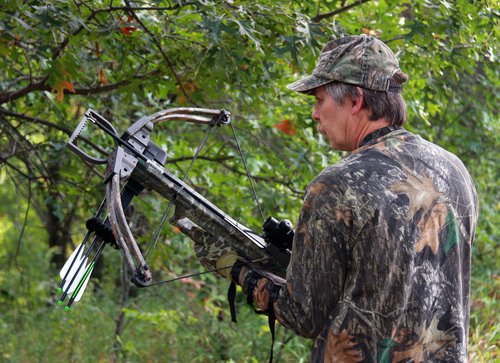Arkansas Hog Hunting: 3 Thrills in the Natural State
Arkansas, known for its picturesque landscapes and abundant wildlife, offers a thrilling hunting experience. Hog hunting reigns supreme among the many outdoor activities locals and tourists cherish. With its rich diversity of terrain and an ever-growing population of wild hogs, Arkansas hog hunting has become an integral part of the state’s culture.
A Brief Historical Glimpse into Arkansas’s Hog Population
To truly appreciate hog hunting in Arkansas, it’s important to delve into its roots. The presence of wild hogs in the state can be traced back to early European settlement. These feral beasts were initially introduced for agricultural purposes but quickly multiplied and adapted to their new environment with astonishing efficiency.
Today, their descendants roam freely across Arkansas’s sprawling forests, rolling hills, and lush river bottoms. Over time, the hog population exploded due to their extraordinary reproductive capabilities and lack of natural predators in the region.
Consequently, they have created significant ecological challenges by outcompeting native species for resources and causing widespread habitat destruction. This has prompted conservation efforts and recreational hunters to target these elusive creatures.
As hog hunting gained popularity throughout the years, it has evolved into a robust industry that attracts enthusiasts from near and far. Whether you’re an experienced hunter seeking a thrilling challenge or a beginner looking to embark on your first hunt – Arkansas offers an unparalleled opportunity to engage in this exhilarating pursuit amidst its breathtaking natural beauty.
Various Wild Hog Species Found in Arkansas
When embarking on a thrilling hog-hunting adventure in the Natural State, you must familiarize yourself with the wild hog species you may encounter. In Arkansas, two primary species roam the forests and meadows: the feral hog (Sus scrofa) and the European wild boar (Sus scrofa domesticus).
Feral hogs are descendants of domesticated pigs that have returned to a wild state, while European wild boars are more closely related to their Eurasian ancestors. The feral hogs found in Arkansas can exhibit a wide range of physical characteristics due to interbreeding between domesticated breeds.
They typically have elongated heads, straight or slightly curved tusks, coarse bristles covering their bodies, and a muscular build. Their coat coloration can vary greatly, ranging from solid black or brown to mottled patterns with spots or stripes.
On the other hand, European wild boars found in certain areas of Arkansas often bear similarities to their ancestors. They possess a stockier build with short legs and prominent snouts ending in a flat disc-like structure called a “rostral disk.” These boars typically have dark grey or black coats, sometimes adorned with light-colored streaks running along their backs.
Characteristics and Behavioral Traits of Wild Hogs
Wild hogs found during hog hunting in Arkansas are known for their impressive adaptability and resilience. Their bodies are well-suited for survival in various terrains and climates. Adult feral hogs can reach lengths between 3 and 5 feet and weigh anywhere from 100 to 400 pounds, depending on age and nutrition.
In terms of behavior, these intelligent creatures display remarkable social dynamics within their sounder (a group of hogs). Sounders typically comprise several sows (females) and their piglets, while larger boars are solitary or form smaller bachelor groups.
During the breeding season, mature boars often compete for dominance through ritualized fights using their formidable tusks. Wild hogs are omnivorous opportunists, meaning they have a diverse diet that includes plant matter, insects, small mammals, and even carrion.
Their strong snouts allow them to root and excavate the ground for food, which can cause significant damage to agricultural fields and native vegetation. These resilient creatures reproduce quickly, with sows capable of giving birth to multiple litters yearly.
Understanding the physical characteristics and behavioral traits of wild hogs in Arkansas is crucial for successful hunting adventures. Armed with this knowledge, hunters can better adapt their strategies to outsmart these elusive and resourceful creatures while pursuing the natural beauty of Arkansas.

The Impact of Wild Hogs on Arkansas Ecosystems
How Wild Hogs Negatively Affect Native Plant and Animal Species
When it comes to the impact of wild hogs on Arkansas ecosystems, it’s safe to say that these rambunctious creatures leave a lasting impression, not in a good way. These sneaky swine have an insatiable appetite for destruction, wreaking havoc on the delicate balance of native plant and animal species. Wild hogs disrupt the natural food chain, leading to a decline in native wildlife populations.
Moreover, their constant rooting and wallowing trample vegetation and disturb soil layers, leaving behind a scarred landscape. From endangered plants struggling to survive to vulnerable animals losing their habitats, hog hunting in Arkansas has become a recreational activity and an essential management tool.
Exploration of Their Destructive Feeding Habits and Rooting Behavior
Wild hogs possess an uncanny ability to turn even the lushest meadows into barren wastelands through their destructive feeding habits. These omnivorous beasts have voracious appetites and will eat almost anything they come across – from crops like soybeans and corn to small mammals, reptiles, insects, or even eggs from ground-nesting birds.
They use their snouts as powerful plows to root the earth for food or water sources. This behavior causes extensive damage to agricultural fields and sensitive riparian zones along riverbanks.
The continuous rooting also disrupts soil structure and nutrient cycling processes vital for healthy vegetation growth. Consequently, hunting wild hogs in Arkansas helps control their population and works towards preserving the fragile ecosystems they threaten.
By understanding the detrimental impact these wild hogs have on native plant species and animal habitats caused by their feeding habits and destructive rooting behavior, we can fully grasp the importance of managing their population through hog hunting in the Natural State. It’s not just about sport; it’s a necessary step in preserving Arkansas’ ecological balance and protecting the future of its diverse wildlife.
Hog Hunting Regulations in Arkansas
Overview of hunting seasons, bag limits, and licensing requirements for hog hunting
Regarding hog hunting in Arkansas, it’s important to be aware of the regulations set forth by the Arkansas Game and Fish Commission (AGFC). The hunting seasons for hogs in the Natural State vary depending on the region and type of land you plan to hunt on. Typically, hunters can pursue wild hogs throughout the year, as no specific season is designated solely for hog hunting.
However, it’s crucial to check with AGFC or consult their website for any changes or specific restrictions that may apply in your area. As for bag limits, there are generally no restrictions on the number of hogs you can harvest.
This is good news for hunters looking to fill their freezers with some delicious pork! Regarding licensing requirements, Arkansas operates under a “landowner privilege” system.
This means that if you own land where hog hunting is permitted or have written permission from a landowner allowing you access, you do not need a hunting license specifically for hog hunting. However, a valid Arkansas Hunting License is required if you plan to hunt on public lands or private property where permission has not been granted explicitly.
Explanation of specific rules and regulations set by the Arkansas Game and Fish Commission
The AGFC has established several rules and regulations regarding hog hunting to ensure a sustainable and safe experience for all hunters. It is important to familiarize yourself with these guidelines before venturing into the field.
One notable regulation concerns weapons used during hog hunts. Hunters are permitted to use rifles chambered in .22 caliber or larger when pursuing hogs on private lands but must utilize legal firearms during designated deer seasons while using public lands.
Additionally, hunters should remember to wear at least 400 square inches of hunter orange on their upper body during firearms deer seasons when hunting hogs on public land. It is crucial to abide by these regulations to ensure safety and avoid conflicts with other hunters.
While hog hunting regulations in Arkansas are generally straightforward, it’s always wise to consult the AGFC website or contact them directly if you have any specific questions or concerns. By following the rules the commission sets, hunters can enjoy a successful and responsible hog hunting experience in this beautiful state.
Popular Hog Hunting Methods in Arkansas
Detailed description of common hunting techniques such as spot-and-stalk, still hunting, and baiting
When it comes to hog hunting in Arkansas, hunters employ various techniques to track down these elusive creatures. One of the most popular methods is spot-and-stalk, which involves patiently waiting at a vantage point and scanning the area for hogs.
Once spotted, hunters stealthily make their way closer to get within shooting range. This method requires keen observation skills and a good understanding of hog behavior.
Another common technique used in hog hunting is still hunting. As the name suggests, this method involves moving slowly and quietly through areas where hogs are known to frequent.
The key here is patience and careful movement since any sudden noise or movement can spook the hogs before you even get a chance to aim. Baiting is yet another strategy employed by many hog hunters in Arkansas.
This approach involves setting up bait stations or feeders where hogs are likely present. By conditioning the hogs to visit these locations for an easy meal regularly, hunters can position themselves nearby and wait for their opportunity.
Introduction to specialized methods like using dogs or night vision equipment for hog hunting
In addition to the common techniques mentioned above, some hog hunters in Arkansas opt for more specialized methods that give them an extra advantage in pursuing their prey. Using well-trained dogs specifically bred for hog hunting is one such method.
These dogs have a remarkable sense of smell, allowing them to track down hogs even when hidden deep within dense vegetation or underbrush. Once the dogs locate the hogs, they bark or bark at them while keeping a safe distance until the hunter arrives.
Another increasingly popular approach among dedicated hog hunters is utilizing night vision equipment. Since wild hogs are known to be most active during the cover of darkness, having night vision goggles or scopes can significantly enhance a hunter’s chances of success.
This technology allows hunters to see in low-light conditions, giving them the upper hand when stalking hogs at night. These specialized methods require a higher level of skill and expertise compared to the more traditional hunting techniques.
They often involve a deeper understanding of hog behavior and require additional training or equipment. However, for those serious about hog hunting in Arkansas and wanting to maximize their chances of a successful hunt, these specialized methods can be both thrilling and rewarding.
Essential Gear for Hog Hunters in Arkansas
Armed and Ready: Choosing the Right Firearms, Ammunition, and Archery Equipment
Regarding hog hunting in Arkansas, having the right gear is crucial. And it all starts with selecting the appropriate firearms, ammunition, and archery equipment.
For firearms enthusiasts, a medium to large caliber rifle is highly recommended for taking down wild hogs effectively. Popular choices among hog hunters include .308 Winchester, .270 Winchester, and .30-06 Springfield.
These calibers offer a good balance between power and accuracy. Pairing them with expanding bullets designed for controlled penetration will help ensure a clean kill.
If you prefer the skill and challenge of bowhunting, a compound or recurve bow with a draw weight of 45 pounds or higher is ideal for hog hunting in Arkansas. Carbon arrows tipped with broadheads designed for big games are essential to deliver enough kinetic energy to penetrate deep into a hog’s tough hide.
Gearing Up: Clothing, Footwear, and Other Essential Accessories
Dressing appropriately can make all the difference when venturing into the wilds of Arkansas for hog hunting. Opt for clothing that provides both comfort and camouflage. Camo patterns like Mossy Oak Break-Up or Realtree APG work well in the dense foliage of the Natural State.
Layering your clothing allows you to adjust to changing weather conditions throughout the day. Regarding footwear, opt for sturdy boots with ankle support and slip-resistant soles to navigate through varied terrains effortlessly.
Insulated boots are essential during colder months when hogs are more active. Alongside your firearm or bow setup, carrying accessories such as binoculars for scouting potential hog sightings from afar is highly recommended.
Additionally, packing essential items like a reliable knife or multi-tool kit for field dressing, a headlamp for hands-free illumination during early morning or evening hunts, and a good-quality game bag to transport your hog are all essential for a successful hunt. Remember, when it comes to hog hunting in Arkansas, being well-prepared with the right gear is practical and adds to the overall experience of immersing oneself in the untamed beauty of this outdoor pursuit.
Best Locations for Hog Hunting in Arkansas
Highlighting prime areas within the state known for abundant wild hog populations
Arkansas offers a wide range of prime locations for hog hunting, making it a haven for enthusiasts. One such area is the Ozark National Forest, known for its extensive wilderness and dense hog population.
The forest’s rugged terrain provides ample cover and food sources, attracting hogs year-round. Another notable region is the Mississippi River floodplain, particularly around the Delta region.
The fertile soils and abundant agricultural fields make it an ideal habitat for wild hogs to thrive. Other promising areas include the Ouachita National Forest and some private hunting clubs scattered throughout the state.
Description of public lands or private ranches that offer guided hunts
Like the White River Wildlife Management Area (WMA), public lands in Arkansas are fantastic options for hog-hunting enthusiasts. With over 160,000 acres for hunting, this WMA provides numerous opportunities to stalk wild hogs in their natural habitat.
Additionally, several private ranches across the state offer guided hunting experiences catered specifically to hog hunters. These ranches often have well-managed hog populations and knowledgeable guides who can enhance your hunting experience with their expertise.
Safety Considerations for Hog Hunters
Importance of firearm safety and responsible shooting practices during hunts
Firearm safety should always be a top priority when engaging in hog hunting in Arkansas or anywhere else. Before heading out to hunt, ensure you are familiar with your firearms operation and strictly follow all safety guidelines.
Treat every firearm as loaded, and keep your finger off the trigger until you’re ready to shoot at an identified target. Furthermore, practice responsible shooting practices by being fully aware of your target and what lies beyond it to avoid accidents.
Tips on avoiding encounters with other wildlife or potential hazards while hog hunting
While hog hunting in Arkansas, it’s essential to be mindful of encounters with other wildlife and potential hazards. During hunts, be cautious of venomous snakes like copperheads and cottonmouths, prevalent in the state’s wooded areas.
Wear appropriate protective clothing, including snake boots or gaiters, when moving through dense vegetation. Additionally, be aware of your surroundings to avoid surprises from other native wildlife species, such as black bears or bobcats.
Processing and Utilizing Wild Hogs after a Successful Hunt
After a successful hog hunt in Arkansas, various ways exist to process and utilize the harvested game meat. Start by field-dressing the hog immediately to retain its freshness. Consider taking the carcass to a professional butcher who can expertly cut and package the meat according to your preferences.
Alternatively, if you enjoy DIY work, learn to properly process wild hog meat using specialized techniques like sausage making or curing for delicious results. Remember that wild hog meat can be flavorful but may require marinating or slow-cooking methods to tenderize it fully.
Conclusion
Hog hunting in Arkansas is an exhilarating experience that allows hunters to explore its diverse landscapes while contributing towards ecosystem management efforts. With prime locations known for abundant wild hogs across public lands like Ozark National Forest and private ranches offering guided hunts, there is no shortage of opportunities for thrill-seeking enthusiasts. However, remember that safety should always come first—adhering to firearm safety protocols and being cautious around potential hazards ensure a successful and enjoyable hunt.
Once you’ve harvested a wild hog, take pride in utilizing the meat through proper processing techniques to reward you with delectable meals for friends and family. So grab your gear and embark on an exciting adventure into the world of hog hunting in the Natural State.






